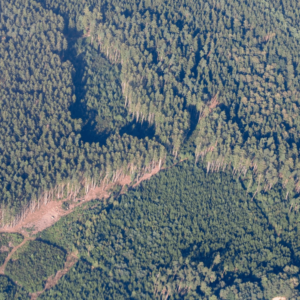The exploration and drilling activity offshore for oil and gas rebounded in May to pre-pandemic levels, according to an analysis of oil services company data. Baker Hughes. The number of drilling vessels increased by 45% compared to the low levels recorded in October 2020. This recovery indicates a gradual recovery of the sector offshore and suggests a continued increase in activity.
The analysts of Wood Mackenzie also project additional growth in exploration offshore and in the drilling activity. They forecast an increase from 20% to 2025, indicating optimism for the sector. This forecast reflects continued demand for oil and gas, as well as investments in new projects. offshore.
According to the Wood Mackenzie, there is a forecast commitment of up to US$ 185 billion for the development of 27 billion barrels of oil reserves. International oil companies are shifting their focus to deepwater developments, which have higher costs but also offer more attractive returns.
This forecast indicates that companies are willing to invest significantly in oil exploration and production projects in deep water areas, which generally require advanced technology and substantial investments. These reserves represent significant potential for future production, driving companies' interest in developing these resources.
However, it is important to note that the economic viability of these projects is subject to a number of factors, including the price of oil, cost of production, regulatory stability and environmental considerations. In addition, the transition to cleaner and renewable energy sources, when it interests exploration groups, can also have significant impacts on the oil and gas sector in the long term.
The Path of Oil and its Impacts on the World
In the 19th century, crude oil was discovered in various parts of the world, such as in Pennsylvania, in the United States, and in the Caspian region, in Azerbaijan. The extraction was initially done manually, using shallow wells and rudimentary methods.
The oil industry began to develop rapidly with the invention of the modern oil well by Edwin Drake in 1859 in the USA. This allowed drilling deep into the ground to access more significant oil reserves. From that milestone, several companies and conglomerates emerged to explore and produce oil on a large scale.
The demand for oil increased even more with the popularization of internal combustion engines, used in automobiles, ships and industrial machines. World War I and World War II also boosted demand for fossil fuels, putting oil at the center of military strategies.
In 2022, the world reached an oil reserve volume of approximately 3.14 billion barrels, with a daily production of around 89.9 million barrels. The United States has remained the world's largest consumer of oil, driven by its size and energy-intensive manufacturing and transportation. Meanwhile, Venezuela was recognized as having the largest known oil reserves in the world.
The discovery of large oil reserves in countries such as the United States, Saudi Arabia, Iran and Venezuela helped to consolidate the so-called “oil giants”, companies that dominated the global production and distribution of oil. These companies established international agreements and consortia to control the exploration, refining and distribution of oil.
Oil exploration and production are not without challenges and controversies. The environmental impacts of the oil industry are of concern, including air pollution, land degradation and risks of oil spills. Furthermore, the continued reliance on oil as an energy source raises questions about sustainability and the effects of greenhouse gas emissions on global warming.
Exploring Great Depths for the Oil Giants
The search for oil at great depths by companies known as “oil giants” has been a matter of concern in the context of climate catastrophes. Oil companies, many of which are known as giants in the industry due to their size and influence, have increasingly exploited oil reserves in hard-to-reach areas such as deep waters and the Arctic. These areas often pose significant environmental hazards and are associated with potential disasters such as oil spills.
It is important to note that there are regulations and standards in place that govern oil and gas exploration in many countries. In addition, many companies in the sector have implemented safety and accident prevention measures to minimize the risks associated with exploration in sensitive areas.
Despite these measures, oil spills can still occur, causing significant damage to the environment and marine life. These incidents have raised concerns about the environmental responsibility of companies in the sector and the need to reduce dependence on oil as an energy source.
In recent years, there has been an increase in the call for cleaner and renewable energy sources, such as solar and wind power, as alternatives to oil. Governments and international organizations have also been pushing for climate change mitigation measures, aimed at reducing greenhouse gas emissions and limiting global warming.
Oil exploration is a long-term, high-risk business, especially in projects offshore of high value. Typically, it takes about five years from discovery to full project development, and at least another 10 years to recoup the initial investment.
The terms of financial return in the oil sector have been more credible for large energy companies when compared to the very different business model of renewable energy production. This is due, in part, to established infrastructure, continued demand for fossil fuels, and established markets around the world.
However, it is important to highlight that market trends can evolve and be influenced by several factors, such as changes in energy policies, development of alternative energy sources and volatility in oil prices.
According to International Energy Agency (IEA) forecasts, global investments in oil and gas are expected to increase by approximately 11% and reach around US$ 528 billion in 2023. This level of investment would be the highest since 2015, suggesting a renewed optimism in the oil and gas sector.
This forecast indicates that companies are resuming investments in oil and gas exploration, development and production projects. The increase in investments reflects the continued expectation of demand for fossil fuels and the need to replace potentially declining reserves.
It is worth noting that forecasts are subject to uncertainty and may be influenced by many factors, such as fluctuations in oil prices, government policies, advances in renewable energy and environmental considerations. It is critical to keep up with developments and up-to-date analysis to gain a more accurate understanding of future trends in oil and gas investment.
Impacts of the use of Oil
The use of petroleum fuel has several consequences, both environmental and socioeconomic. Some of the main consequences are:
- Greenhouse Gas Emissions: Burning oil releases carbon dioxide (CO2) and other greenhouse gases into the atmosphere, contributing to global warming and climate change.
- Air pollution: Petroleum combustion in vehicles, power plants and industries generates air pollutants such as nitrogen oxides (NOx), sulfur dioxide (SO2) and fine particles, which have negative impacts on air quality and human health .
- Oil spills: The exploration, transport and storage of oil are subject to the risk of leaks and spills, which can cause devastating damage to marine and coastal ecosystems, harming marine life, birds and natural habitats.
- Reliance on non-renewable resources: Oil is a non-renewable resource, which means that its availability is limited and will eventually run out. Continued reliance on oil as an energy source could lead to future energy supply and security challenges.
- Social and economic impacts: The oil industry has significant social and economic impacts on communities and producing countries. This includes issues such as economic dependence on oil, displacement of communities, socioeconomic inequalities, conflicts in production areas and governance issues.
One solution to deal with the consequences of using petroleum fuel is the transition to cleaner and more sustainable energy sources. It is possible to think of investment in renewable energy, Energy efficiency, for policies and regulations, for research and development, consider awareness and education.
By adopting these solutions, it is possible to reduce greenhouse gas emissions, improve air quality, prevent oil spills, diversify energy sources and promote more sustainable and resilient development. It is important that governments, businesses and individuals work together to address the challenges and promote an effective energy transition.













